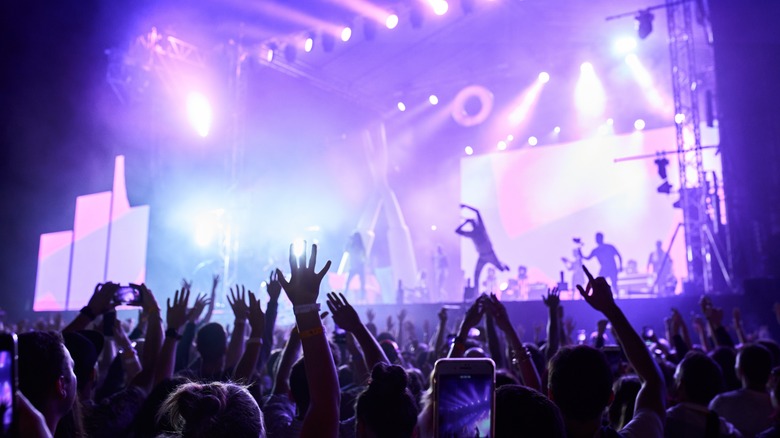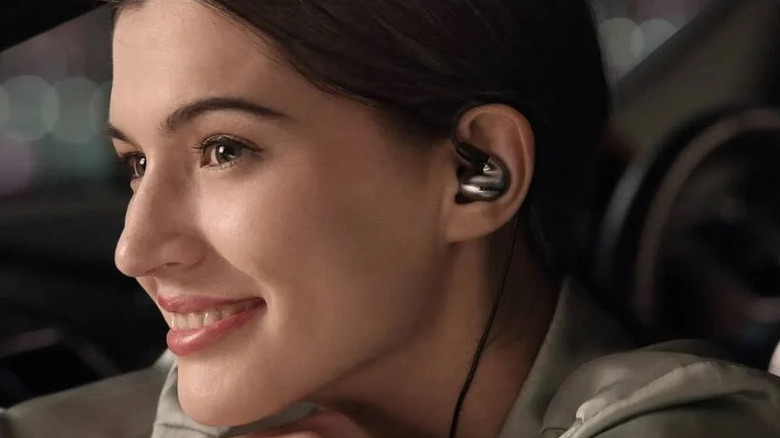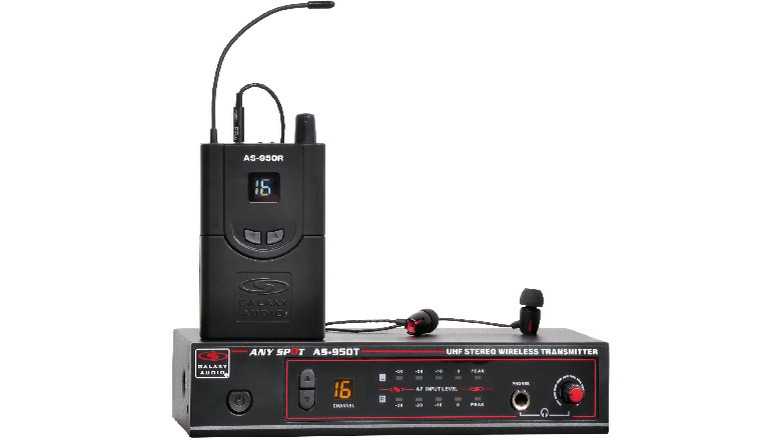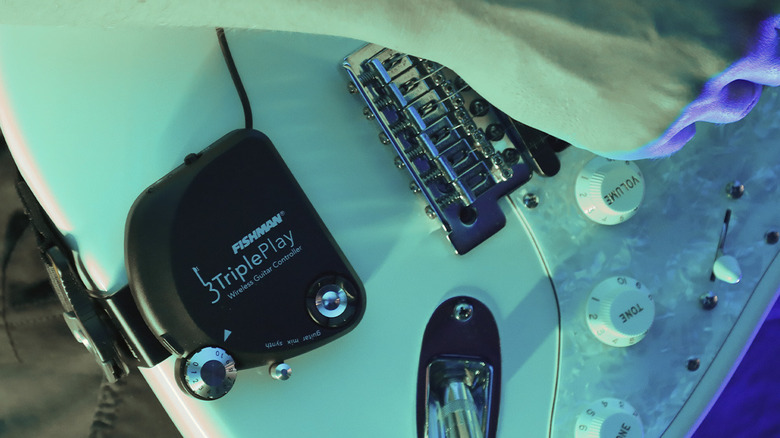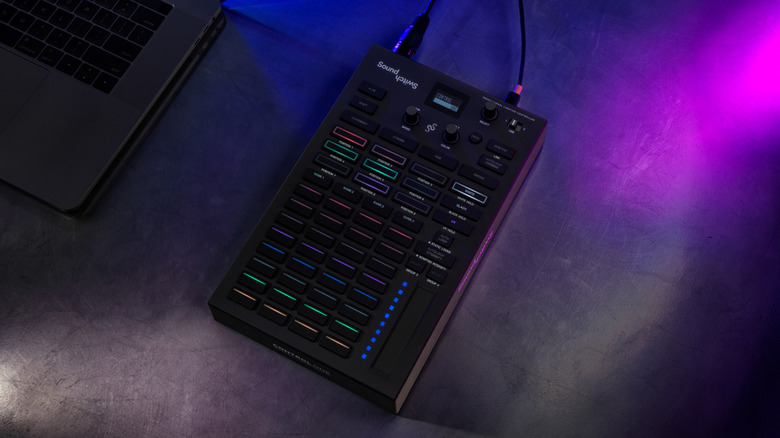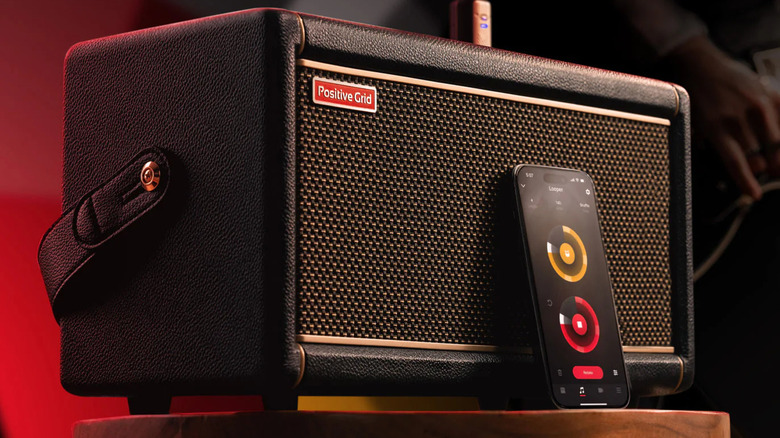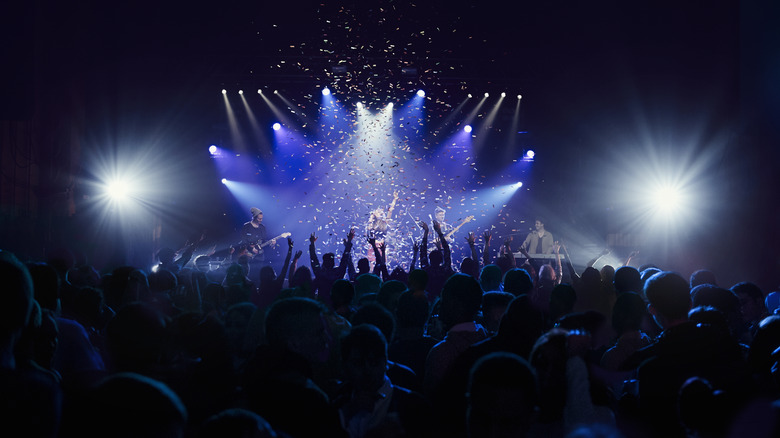5 Unique & High-Tech Gadgets Every Live Musician Will Want
We may receive a commission on purchases made from links.
Music production has become exponentially reliant on modern technology in the last few decades. Whether we are talking about digital audio workstations (DAW), MIDI, or any number of plug-ins and gadgets, the days of setting up a couple of microphones for a band to play together are becoming a thing of the past. In fact, you could create an entire catalog of music nowadays that people love without ever picking up a physical instrument. While that is understandable in recording studios, there is still some belief that once these artists get on a stage to perform this technology is less important because you do not have the ideal circumstances to implement it. However, that could not be further from the truth, as with recording, live performances need it too.
This is nothing new. Before, musicians performing did not have any method of amplification outside of what their instruments could accomplish, which is why certain spaces were more acceptable for acoustic production than others. Then microphones and amplifiers brands came into the game. Live performances are constantly evolving with what technological innovations come about, and especially for artists whose music is electronically heavy, they need the best ways to give that to their audiences.
While being a professional musician is nowhere near being my day job, I have been a guitar player for nearly 20 years and am always fascinated with what new tools musicians can get their hands on. Here are five that folks looking to get on stage may want to have in their arsenal. Music gear can be exceptionally expensive, so the products here will have a $500 limit to cater to those on a budget (there will be more on our methodology later).
In-ear monitors
Before we get into the kookier stuff, we need to start off with a true essential for any live musician, and that would be in-ear monitors. These are not exactly new pieces of tech, but they could not be more important. The benefits are numerous. First off, there is no more crucial element to a live performance than clearly hearing the other instruments that are on stage with you, whether they be real or digital.
With on-stage monitors, you deal with a blast of noise of every instrument together, but with in-ear monitors, you can create your own personal mix for what you need to hear on stage to keep yourself in tune and on time. If you utilize a click track, you can also pump that into your in-ear monitors without the audience hearing it. Lastly, musicians who play live frequently can often wind up with damage to their hearing, and instead of loudspeakers blaring at you, you can keep your music to a comfortable volume in your ears.
There are plenty of high quality in-ear monitors on the market that can satisfy just about any budget. On the really low end, Linsoul has the Kiwi Ears Cadenza monitors that sell for just $35, which come highly recommended from Audiophile Style. Meanwhile, Music Radar selects the Shure SE215 Pro monitors as its preferred budget option, noting its bass as a particular highlight. These sell for $99, which may seem like a lot, but when you consider the high-end monitors cost thousands, this is a great deal from Shure, which has long been one of the top brands in sound equipment for decades.
In-ear monitor system
Having a pair of in-ear monitors is extremely important, but you need more than just the earphones themselves to make the theme effective for a live performance. You need a way to get the sound of what is on stage from the main soundboard to your monitors. As you most likely do not want to have a bunch of 30-foot long wires sprawling about the stage, you will need to get a transmitter and a receiver for your in-ear monitors. A transmitter is what you will connect to your soundboard, and the receiver are mobile units that can attach to a person's waistline, guitar strap, or any other place that receives the signal from the transmitter. This is what you will plug your monitors into.
Luckily, many companies sell in-ear monitor systems that come complete with not just the transmitter and receiver but also the earphones as well. You then need to think about how many people are on stage with you. Most monitor systems come equipped with one, two, or four receivers, but that does not mean they can only utilize those amount of receivers. For a wonderful budget-friendly option for an entire band, Sweetwater recommends the Galaxy Audio AS-950 In-Ear Monitor System.
This system sells with just one receiver, which is why it costs just $199.95, but its 16 channels are able to handle additional receivers for all your bandmates as well. It also comes with its own set of in-ear monitors as well. The average rating between customers on Amazon and Sweetwater is four stars, and while other monitor systems score much higher, they are mostly over that $500 threshold.
Fishman TriplePlay Wireless MIDI Pickup
Although a lot of people think the major innovation to modern music production in the last few decades is Auto-tune or some form of pitch correction, the true winner of this made up competition is MIDI. The ability to use a single keyboard, known as a MIDI controller, in conjunction with a digital audio workstation (or DAW) and a plethora of instrument plug-ins gives one person the ability to have an entire digital orchestra at their fingertips. However, a keyboard is not the only device that allows you to control these digital instruments, and others can create sounds and inflections that particular instrument simply can't.
Once such instrument is a guitar. If you equip your electric guitar with a Fishman TriplePlay Wireless MIDI Pickup, you have the entire MIDI landscape at your fingertips but are able to use it with the dexterity and flexibility of a guitar. You have a physical instrument that can bend and sustain with a true human touch, and being able to bring that to a live DAW can give your single guitar on stage the sound of a full string section if you so choose to have it.
With an overall customer average of 4.3 stars on Amazon, it has shown to be well-liked among guitar players. You connect the wireless pickup to either your computer or the Fishman TriplePlay FC-1 controller — which is sold separately to be added to your guitar's pedalboard — to give you the best optionality and control during your live performance. The MIDI pickup itself retails for $380 with the FC-1 going for $249.95.
SoundSwitch Control One Lighting Console
When you go into a club, dance hall, theater, or whatever stage you are going to play on, we all know that — especially nowadays — the music you are playing is not the entire show. There is still the presentation of the performance that is incredibly important. You don't need backup dancers or confetti cannons, but what you do need are lights. Not only are these lights for the audience to see you, but you can control the mood of the show by shifting brightness, color, and more to match the song you are playing.
Plus, you may want certain lighting effects to occur at certain points during a song to give it that extra punch. For the average touring band, they don't necessarily have a designed lighting designer who will handle all of this, and you have to do it yourself. One product that can help you with that would be the SoundSwitch Control One.
Programming lights and understanding DMX channels is a massive undertaking if you've never dealt with it before. However, if you are willing to put in the time and effort, the SoundSwitch Control One is a fairly simple, budget-effective option for your live performances. This is particularly true if you are someone who uses a lot of programming in your music, as the design of this device was originally for DJs, and its setup heavily resembles a trigger-controlled MIDI pad. The Control One is highly recommended by the likes of We Are Crossfader and sells for around $282, but you also need to use the SoundSwitch software to preprogram all of your lighting effects, which is $7.99 per month, $79.99 per year, or $199 for a lifetime.
Positive Grid Spark 2
All of the equipment discussed thus far was done under the assumption that the live musicians will be performing in a venue designed for music with highly complicated tour dynamics. However, there are many other places a musician can perform live music, and that is no more clear than the life of a busker. Whether they are on a street corner, a park, a subway stop, or wherever, busking is vitally important to the livelihood of countless musicians and can act as a great gateway if the performance hits right. With this life, you need to pack light and be mobile, but if your instrument of choice is an electric guitar, you need to plug that into something that can easily be carried around. Enter the Positive Grid Spark 2, which received a 9/10 review here on SlashGear.
For the price of $299, this is an amplifier that runs either with a power cord or a rechargeable battery, which you do have to purchase separately. With 50W of power, it delivers a pretty good punch for its size. It also weighs just a little over 12 pounds, making it easy to bring around from spot to spot. The optional Spark Battery that you can get, which costs $79, allows you to use the amp for up to 12 hours.
The Spark 2 also can connect with a mobile app that lets you control everything from loops to tones, and you can create many different presets for your playing. It's a good bang for your buck option, whether you're busking on the street or just practicing at home.
Why this live performance gear was chosen
The number one key to making this list of gadgets and gear that would be right for live musicians was to lock onto some form of universality. What equipment a band or lone musician uses on stage is entirely dependent on what kind of music they play. So for this, I wanted to spotlight some gear that has pretty broad appeal, particularly for Western popular music performance. That is the music I am most familiar with, and presumably, the audience for this list will feel similarly.
I also wanted these items to be practical. There are a million different instrument-specific doohickeys out there, but rather than pick gear that delivers a specific sound or tone, I wanted to choose the ones that enhance and streamline what the artists are able to do on stage.
From there, I also wanted to look to the opinions of others. First off, that meant the reviews and recommendations of other publications, such as Audiophile Style, Guitar World, We Are Crossfader, and MusicTech. Customer reviews were also vitally important, whether they be from Amazon, Sweetwater, Guitar Center, or a company's own website. These are the people who actually purchase these typically expensive pieces of equipment and give their honest feedback.
I also did not want to recommend items that would break the bank too much. Obviously, the gear mentioned here isn't exactly cheap, but if you are in the market for the top-of-the-line, stadium-ready equipment, chances are that you have hired other people to handle that stuff for you. Once all of that was taken into consideration, these five items were selected.
